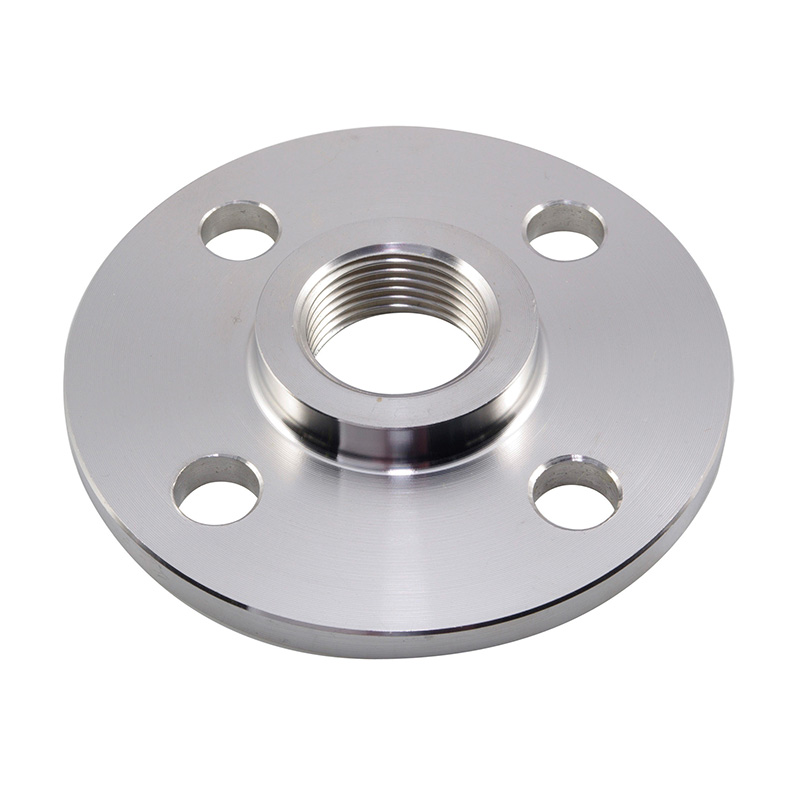Corrosion Resistance of Duplex Steel S31803 Threaded Flanges vs. Other Stainless Steels in Industry
2024-06-13
Corrosion resistance is a critical factor in the selection of materials for industrial applications, particularly for components like threaded flanges that are exposed to harsh environments. Duplex Steel S31803, also known as Duplex 2205, is renowned for its excellent corrosion resistance, but how does it compare to other stainless steels? This blog explores the corrosion resistance of Duplex Steel S31803 threaded flanges in comparison to other commonly used stainless steels across various industrial applications.
Understanding Corrosion Resistance in Stainless Steels
Corrosion resistance in stainless steels is primarily determined by their chemical composition, specifically the presence of chromium, nickel, molybdenum, and nitrogen. These elements enhance the material's ability to resist various forms of corrosion, such as pitting, crevice corrosion, and stress corrosion cracking.
Duplex Steel S31803: Composition and Corrosion Resistance
Duplex Steel S31803 has a balanced composition of approximately 22% chromium, 5-6% nickel, 3% molybdenum, and 0.14-0.20% nitrogen. This composition imparts superior corrosion resistance, especially in environments containing chlorides and acidic solutions.
Key Types of Corrosion Resistance
1. Pitting Corrosion Resistance:
- Duplex Steel S31803: The high chromium and molybdenum content provides excellent resistance to pitting, which is crucial in chloride-rich environments such as seawater and chemical processing plants.
- Austenitic Stainless Steels (e.g., 316L): While 316L also offers good pitting resistance due to its molybdenum content, Duplex 2205 outperforms it, especially in more aggressive chloride conditions.
2. Crevice Corrosion Resistance:
- Duplex Steel S31803: Its ability to resist crevice corrosion is superior due to the presence of nitrogen, which stabilizes the passive film on the steel's surface.
- Austenitic Stainless Steels: Steels like 304 and 316L are more susceptible to crevice corrosion, particularly in stagnant or low-oxygen environments.
3. Stress Corrosion Cracking (SCC) Resistance:
- Duplex Steel S31803: Exhibits high resistance to SCC due to its duplex microstructure (a mix of austenitic and ferritic phases), making it less prone to cracking under tensile stress in corrosive environments.
- Austenitic Stainless Steels: Generally more vulnerable to SCC, particularly in chloride-bearing solutions, making them less reliable in such conditions compared to Duplex 2205.
Comparative Performance in Industrial Applications
Oil and Gas Industry
- Duplex Steel S31803: Frequently used in subsea and offshore applications due to its exceptional resistance to both pitting and SCC in seawater and sour gas environments.
- 316L Stainless Steel: Commonly used but less effective in highly corrosive offshore environments where Duplex 2205 offers better long-term performance and durability.
Chemical Processing
- Duplex Steel S31803: Ideal for handling harsh chemicals, including organic and inorganic acids. Its resistance to chloride-induced corrosion makes it suitable for heat exchangers, tanks, and piping systems.
- 304 and 316L Stainless Steels: While 316L is used in less aggressive chemical environments, it does not match the pitting and crevice corrosion resistance of Duplex 2205 in high chloride concentrations.
Marine Industry
- Duplex Steel S31803: Preferred for marine applications, including boat fittings, desalination plants, and coastal infrastructure, due to its superior resistance to seawater corrosion.
- 316L Stainless Steel: Used in marine environments but can suffer from pitting and crevice corrosion over time, making Duplex 2205 a more reliable choice.
Power Generation
- Duplex Steel S31803: Used in cooling water systems, flue gas desulfurization units, and other components exposed to chloride-containing cooling fluids. Its robust corrosion resistance ensures longevity and reliability.
- 304 and 316L Stainless Steels: Suitable for less aggressive conditions but may not provide the same level of resistance and performance as Duplex 2205 in harsh environments.
Conclusion
Duplex Steel S31803 threaded flanges exhibit superior corrosion resistance compared to many other stainless steels, particularly in high chloride and harsh industrial environments. Its unique composition and microstructure provide exceptional resistance to pitting, crevice corrosion, and stress corrosion cracking, making it a preferred choice for demanding applications in the oil and gas, chemical processing, marine, and power generation industries. By understanding the comparative advantages of Duplex 2205, industries can make informed material selections to ensure the longevity and reliability of their critical components.



